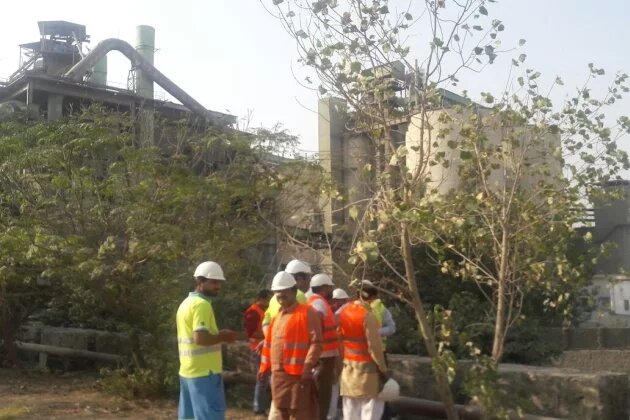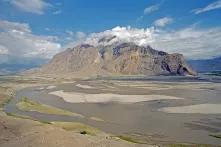
On Friday, 20th October, 2017, a capacity building workshop for Lahore-based environmental journalists was organized and attended by a large number of journalists from print and electronic media along with representatives from one of the three factories in Chakwal district.
Mr Hammad Naqi Khan, CEO, World Wide Fund for Nature-Pakistan (WWF-Pakistan), shared the salient features of the Environmental Impact Assessment of the first ever cement factories installed 14 years ago. The fears anticipated at that time have unfortunately come true. The livelihood and health of locals from Kahoon valley has been compromised by loss of land, air pollution and water depletion.
The next day, the journalists were taken to visit the Bestway Cement factory in Chakwal and interacted with the technical, administration teams and the management. The representatives of the factory’s higher management claimed that waste to energy technology to make optimum use of the waste generated during factory operations are used and he air pollution and water contamination are managed through advanced technologies and machinery installed. However, the community, whom the journalists met later that day, blamed the factories in the area for various social and environmental problems they are confronted with today.
General (R) Safdar, the former Governor of Punjab and former Vice Chancellor of Punjab University is also a resident of the area and has kept the issue of pollution and illegal cement plant installations prominent. His efforts revolved around gathering other like-minded locals and raising the issue with the relevant people in government. He believes that the ecology of the area has been disrupted by these factories who were to be located in Laiya- a town little further away from Chakwal district but instead Kahoon Valley was selected due to the close proximity to the raw materials. He and his wife claimed to be victims of air and water-borne diseases such as Asthma. The new cement factory according to him has cordoned off the area without an approval from the Environment Protection Agency Punjab. This also includes pastures of the locals whose livelihood is dependent on livestock and agriculture.
The impact of the water table depletion has also affected the supreme and ancient Hindu community heritage, the Katas Raj Temple. According to Hindu mythology the water pond in the temple is made of god Shiv’s tears and pilgrims from around the world were taking their ritual baths in the pond every year. Furthermore the pond of Katas Raj Temple has supplied water to nearby villages for centuries. But now this holy site for Hindus, which is listed as UNESCO world heritage site has dried out.
The locals of the area briefed the media that depletion of groundwater, air and water pollution and land encroachment are also important issues which are threatening their well-being. The communities complained that due to the installation of excessive tube wells by cement factories in the area and increase in human population, the water levels have dropped significantly, which is leaving them with no other option but to dig deeper bore holes for groundwater abstraction.
The Supreme Court (SC) took Suo Moto action based on the media reports published by the journalists who visited the area with hbs. The court has ordered to setup a committee that would investigate the reasons for the declined water levels in the area. Further the SC also showed displeasure regarding the damage caused to the Hindu community's Heritage-Katas Raj temple.
Media Coverage
Katas Raj case: 'Will halt water supply to cement factories if necessary, (DAWN)
SC issues notices to cement factories around Katas Raj (DAWN)
Will stop water supply to cement factories if necessary, says CJP in Katas Raj case (PakistanToday)


